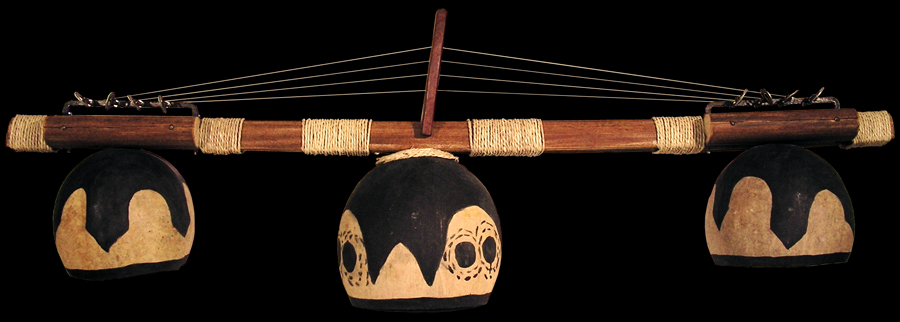Gabon is globally known for its wooden masks. Each ethnic
group has its own set of masks, with different masks representing different
purposes. Masks are generally used ceremoniously, whether it’s for marriage,
birth, funerals, harvest season, and other life milestones. Although it would be relatively easy to
buy modern materials, many of today’s mask makers stick to traditional methods
by using local woods and materials to create their work. One of the most famous
types of masks are the n’goltang created by the Fang tribes.
Not only do the Gabonese make these elaborate masks, but
they’re also known for their face paint as well. The colors used are based on
natural dyes, mainly white, red, and charcoal.
 |
| Face paint is often used in Bwiti ceremonies. And apparently grass and leaves on your head is cool too. |
Reliquary figures of the Kota are another art form that has
been preserved. Also called Bakota, their communities reside in the
northeastern regions of Gabon.
These reliquary figures, mostly made from copper or brass, are an
important feature in the Bwete religion.
These figures are viewed as guardians.
Every village values craft work because these are the items
used in everyday life. Women – some professional craft workers, some not – make
everyday objects with designs unique to their region such as mats, bowls, wall
coverings, and other items for their families and the community.
 |
| Mvett, also spelled mvet |
The literature of Gabon has a relatively short lifespan. The
older members of each tribe passed stories down to the younger members,
retelling these stories for many generations. It wasn’t until the French
arrived when written language became prevalent as well. However, it would take
until the last 10-20 years before literacy rates would rise; today it’s about
89% (92.3% for men; 85.6% for women).
Even though there is a growing canon of newly written literature in
French, there are “raconteurs” in Gabon working to keep the oral traditions
alive. Two of these traditions
that are the most documented are the mvett
of the Fang peoples and the ingwala
of the Nzebis. The mvett not only
refers to the musical instrument (similar to a berimbau of Brazil), but also
the performer, and the style of epic poetry that is performed.
Up next: music and dance



No comments:
Post a Comment